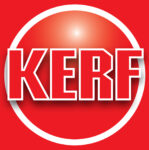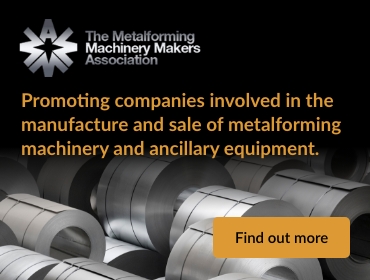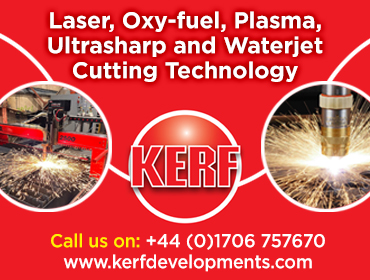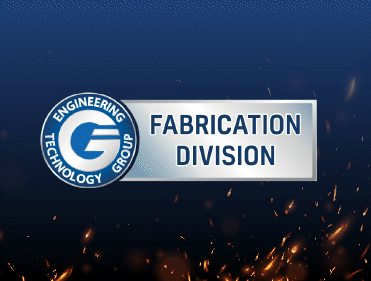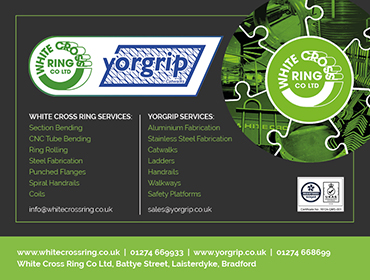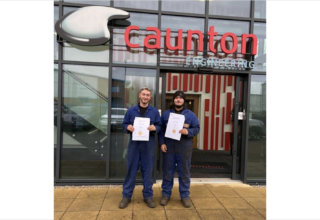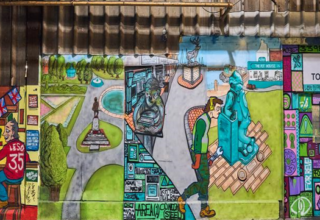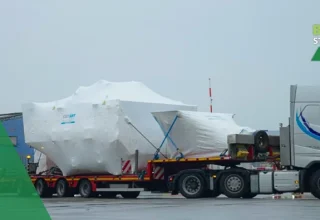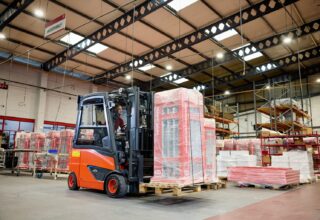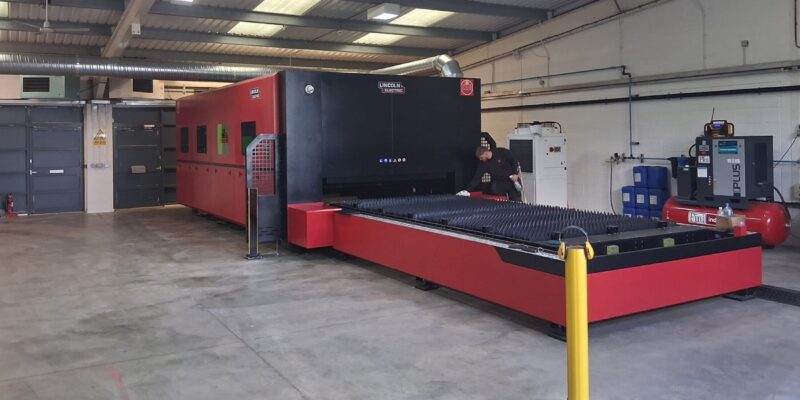
Burton’s Engineering Services, a Grimsby-based engineering company established in 2020, has made a strategic leap into laser cutting with the installation of a Lincoln Electric Linc-Cut 2040A fiber laser system. The 12kW machine, supplied by Kerf Developments of Rochdale, represents a bold diversification for a company that has built its reputation on site services, breakdowns, repairs, and factory maintenance for the food and waste industries.
Thomas Burton founded the company during the first COVID lockdown in 2020—a decision that many considered risky. “We had no option. My employer was laying off and said there was no work out there. But I knew there was. The gamble paid off, and after starting, we grew rapidly and we eventually took my previous employer’s work too,” he notes.
Starting with supplying engineering site services, Burton’s Engineering Services grew rapidly. “We started getting a lot of project work and short shutdown work,” Burton explains. The company specialises in repair, maintenance and overhaul of equipment such as production lines, radial stackers, shredders, and optical sorters, providing both labour and engineering expertise for time-critical maintenance and overhauls.
Today, the company employs 52 staff—a remarkable growth in just five years. Burton has built the business with an acute awareness of market dynamics and the need for diversification. “We needed something else to fall back on, and when a brief quiet period materialised, we invested in laser cutting capability.”
Identifying the Gap
A clear opportunity in the Grimsby area drove the decision to enter laser cutting. “There’s only one competitor in Grimsby, and a lot of sheet metal workers in the area use a service based in Hull, over one hour away.”
Paul Eastburn from Kerf Developments confirms this analysis: “Companies were having to go out of the area. Burton’s business model is based on service and turnaround—investing in the Lincoln Electric Linc-Cut 2040A fiber laser machine to offer a fast service and working through the night to get parts cut quickly.” The strategy targets 24 to 48-hour turnaround times for local engineering companies and project-based work, particularly serving the numerous food processing and pharmaceutical plants in the region.
Burton continues: “We actually invested in the fiber laser with no customers.” The investment was justified—within months of installation, the machine is running more than 12 hours a day.
The Lincoln Electric Decision
Burton’s route to selecting the Lincoln Electric machine from Kerf Developments began with a handheld plasma cutter. “We bought a Lincoln handheld plasma cutter for cutting seized steel plates in a Rademacker bakery machine; only the Lincoln plasma cutter proved capable of the task. I then wondered if Lincoln did a fiber laser – I put it on the internet, and they did!”
Burton candidly adds: “I didn’t know laser cutting that well, so it was more brand loyalty. However, the performance has validated our choice. Customers are delighted with the fast turnaround service, and the quality of the cut is exceptional.”
The Linc-Cut 2040A specified by Burton features a 2m by 4m cutting bed and a 12kW laser. “I wanted a 12kW laser to cater for the diverse material sizes. If you’re investing, why not go for the best?”
Paul from Kerf explains the technical rationale: “Because Burton is offering a subcontract service, they are trying to give themselves every chance of covering all areas of the market, hence the reason for choosing the 12kW machine.”
The cutting capacity proves impressive. Burton reports: “We’ve cut everything from 0.5 to 25mm stainless, and 1 to 40mm mild steel with cutting speeds up to 45m/min depending upon material thickness.”
More Productive With Automation
The shuttle table on the Linc-Cut 2040A represents a critical productivity feature. “While it’s cutting, we can unload parts from the shuttle table and load the next sheet. It allows continuous operation and maximises our productivity,” adds Burton.
Burton specified Lantek nesting software for offline programming, recommended by Kerf. “The Lantek software works harmoniously with the Linc-Cut 2040A for all our cutting parameters,” Burton notes. The Lantek software suite includes comprehensive technology tables with cutting parameters for various materials, thicknesses, speeds, feeds, and acceleration rates. The machine also includes Lincoln Electric’s proprietary software, which operates within the machine. This significantly improves productivity, set-up times, programming times and simplifies the learning process.
The machine’s workload has exceeded expectations. “It runs all day, but on one recent project involving 276 sheets of 3mm stainless steel, we were cutting day and night – running 24 hours a day until project completion. That reliability and uptime are another reason we selected Lincoln and Kerf”
Discussing the workload, Burton adds: “We do production runs as well as small quantities. On one recent job, we had to cut 2,000 parts with pieces measuring 600 by 700mm. As well as cutting stainless and mild steel, we’ll occasionally do aluminium work too. The machine is always cutting, and we always have one man running it. When customer production lines are down, the hourly cost can be significant. One food plant recently reported that downtime for a production line creates losses of £7,000 per hour, so having the Lincoln machine to support our customers in getting production up and running urgently is imperative – and the local fast turnaround service from Kerf is hugely appreciated.”
The Future
The laser installation represents only the beginning of Burton’s Engineering Services investment programme. “We’ve just purchased a CNC press brake as it goes hand in hand with fiber laser cutting,” he notes, explaining the logic of their integrated cutting and bending capability.
A current opportunity involves manufacturing auxiliary chains for a waste processing customer. The components are currently sourced from the USA at approximately £250,000 per unit with three-month lead times. “Having the capability to produce this locally will significantly reduce the lead-times and costs for the customer whilst enhancing quality and enabling the end user to have a complete service from a single source.”
The Growth Trajectory
Burton is frank about the financial commitment. “We’ve ploughed seven figures into this now,” he acknowledges, referring to the new premises on Euro Park specifically chosen to accommodate the laser system and additional equipment investments.
The business case is already being validated, as Paul from Kerf adds: “The business has a real entrepreneurial spirit. Thomas realised the gap in the market was there, and he’s already picking up major contracts.”
When asked about satisfaction with the installation, Burton’s response is unequivocal: “We’re delighted. It’s an excellent machine. We are likely to buy another laser when the existing machine gets too busy.” Would the next machine be another Lincoln? “Most definitely,” Burton responds immediately.

